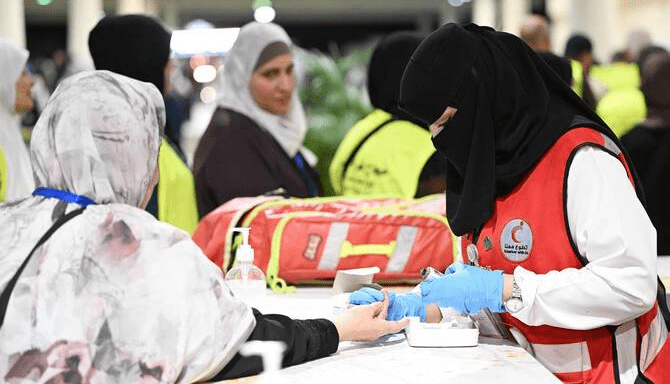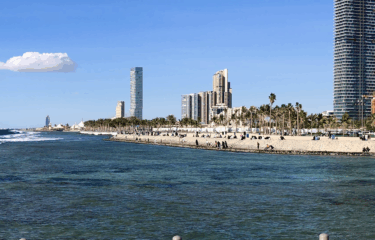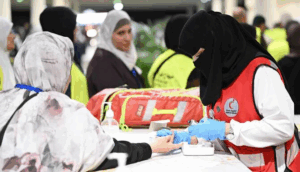Every Dhul Hijjah, Makkah becomes the center of the world for millions of Muslims. But behind the scenes of every prayer, every step between Mina and Arafat, and every moment of spiritual reflection, there’s a massive operation working to keep pilgrims safe and healthy. Hajj 2025 was no exception. In fact, it marked a new level of readiness and innovation in how Saudi Arabia delivered healthcare to pilgrims.
This isn’t a story about numbers, though there are plenty—over 1.25 million pilgrims, more than 147,000 medical services delivered. It’s a story about how Saudi Arabia reimagined care for the Guests of Allah. From virtual consultations in seven languages to drones flying through the desert heat carrying life-saving supplies, the Hajj 2025 healthcare effort showed how thoughtful planning and technology can make a real difference.
Making Medical Help Reachable Anytime, Anywhere
During Hajj, you never know when someone might need care. It could be a diabetic episode on a long walk or heat exhaustion after a crowded ritual. What mattered this year was how fast and accessible help had become.
The Seha Virtual Hospital led the way. Recognized as the world’s largest virtual hospital, it ran nonstop throughout the season. Pilgrims could call, message, or video chat with doctors using the Sehhaty app or other platforms. They didn’t need to know Arabic. Services were available in English, French, Turkish, Urdu, Persian, and Indonesian. This was life-saving access, especially for older pilgrims or those traveling alone.
The system allowed medical reports to be uploaded, reviewed, and even followed up on by specialists if needed. It didn’t replace on-ground clinics or hospitals. Instead, it added a layer of comfort and coverage, filling in gaps that physical services sometimes can’t reach.
This shift toward virtual healthcare reflects broader Saudi Vision 2030 goals of bringing innovation into essential services, making care smarter, and building systems that are built around people, not paperwork.
Drones That Beat the Clock
In the Hajj 2025 healthcare network, some of the fastest responders didn’t wear white coats. They flew.
A drone-based medicine delivery system was rolled out this year after two years of development and testing. Managed by the Makkah Health Cluster and NUPCO, it was designed for moments where minutes mattered. Ground transport to hospitals like Mina Emergency could take over an hour during peak times. Drones cut that down to six minutes.
One day, as temperatures rose and crowds thickened, drones dropped off cooling packs and essential medication to treat heatstroke. The equipment inside stayed temperature-controlled mid-air. Every item was packed to Saudi Food and Drug Authority standards, tracked in real-time, and delivered exactly where it was needed.
The drones proved that modern logistics could adapt to the realities of pilgrimage, where congestion, heat, and unpredictable needs are part of daily life.
Preparing Pilgrims Before They Even Fell Ill
The Ministry of Health knew that good healthcare isn’t only about treatment. It starts with prevention. That’s why they distributed awareness kits in eight languages, packed with useful advice.
Inside were guides on how to stay hydrated, avoid sun exposure, manage chronic conditions like diabetes or high blood pressure, and understand vaccine requirements. The message was to come prepared and stay well.
Videos, social posts, and printable materials reinforced those lessons. Even the most tech-averse pilgrims had ways to understand how to care for themselves during their journey. With so many pilgrims coming from different parts of the world, these materials made the information relatable and digestible.
For many pilgrims, this was the first time they received such proactive health education from a host country. It turned healthcare into a shared responsibility.
Clinics, Hospitals, and Human Presence
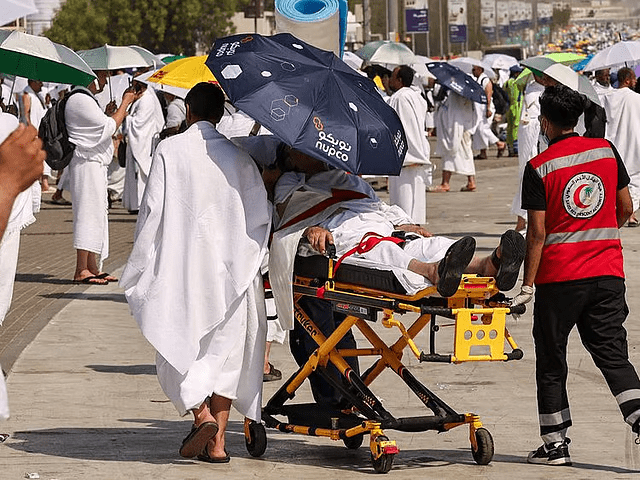
For all the tech upgrades, nothing replaced the comfort of a human voice, a steady hand, or a hospital room ready for emergencies. Saudi Arabia staffed hundreds of health centers in Makkah and Madinah, including temporary clinics set up near camps, hotels, and ritual sites.
Medical teams worked in shifts, some covering entire nights during the busiest periods. These included orthopedic specialists, surgeons, mental health professionals, and pharmacists. Every part of the system was ready to treat conditions ranging from minor injuries to major cardiac events.
International teams also played a role. Pakistan’s Hajj Medical Mission was one of the most organized, with more than 300 staff on duty. They operated hospitals, dispensaries, and emergency services catering specifically to their citizens.
This network of care gave pilgrims peace of mind. Knowing that someone was nearby, trained and ready, made the spiritual experience more focused and less stressful.
Air Ambulances
When ground transport couldn’t move fast enough, air medical evacuation stepped in.
Helicopters equipped like intensive care units hovered near ritual sites. Staffed by Ministry of Defense teams, they picked up severe cases from places like Arafat or Muzdalifah and flew directly to referral hospitals in Makkah or beyond.
These airborne teams worked with full coordination. Their aircraft carried mobile ICUs, oxygen systems, defibrillators, and everything needed to stabilize patients mid-air. They responded around the clock, bridging the physical distance between emergencies and hospital beds.
This part of the Hajj 2025 healthcare operation showed how prepared the Kingdom was for worst-case scenarios. And while not every pilgrim saw or needed those helicopters, their presence reassured the entire system.
What This Means Going Forward
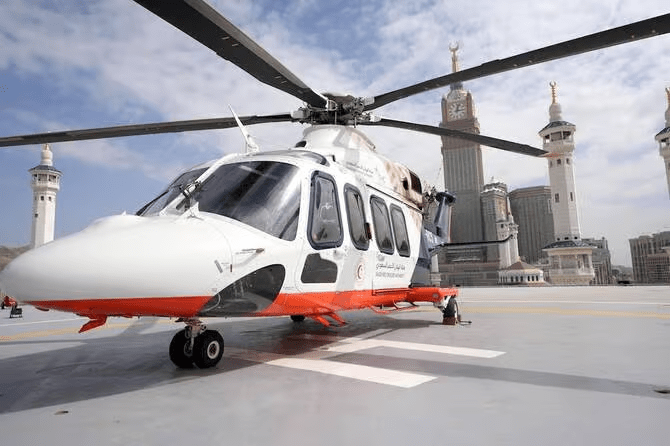
Saudi Arabia’s approach to healthcare during Hajj 2025 created a strong model that combined speed, empathy, clarity, and innovation. It gave each pilgrim a better chance at completing their journey safely.
What worked best was the mix of old and new. Clinics sat alongside drones. Printed guides were backed by virtual consultations. Local staff worked hand in hand with global missions.
For other countries or organizations planning large events, this year’s Hajj stands as an example. It’s possible to handle huge crowds with care and detail. And it’s possible to use technology without losing the human touch.
Pilgrims came to Makkah with prayers. Saudi Arabia welcomed them with readiness.
FAQs
How did Saudi Arabia manage healthcare for pilgrims during Hajj 2025?
Saudi Arabia implemented an integrated plan that included virtual consultations, drone-based medicine delivery, multilingual health education, on-ground clinics, and air evacuation services to care for over 1.25 million pilgrims.
What was the role of drone technology in Hajj 2025 healthcare?
Drones were used to deliver critical supplies like medications and cooling packs to hospitals in under 10 minutes, significantly cutting delivery times during peak congestion.
Did pilgrims have access to virtual medical consultations?
Yes. Pilgrims used the Sehhaty app and other platforms to connect with doctors in seven languages. They could consult through voice, video, or text and share test results for real-time medical support.
What kinds of healthcare facilities were available on-site?
There were over 300 temporary and permanent facilities, including mobile clinics, emergency rooms, and specialized hospitals. These were staffed with experts in cardiology, orthopedics, mental health, and more.
How was emergency medical transport handled?
Saudi Arabia deployed air medical evacuation units to quickly transport critically ill patients from ritual sites to hospitals. These aircraft operated like flying ICUs and were crucial for time-sensitive care.
Follow us on Instagram for daily travel inspiration and untold stories from the Kingdom. Want more? Explore more experiences and stories in our Lifestyle and Wellness category.
This article is brought to you by Soul of Saudi — a Saudi travel blog dedicated to uncovering the heart and soul of the Kingdom.

